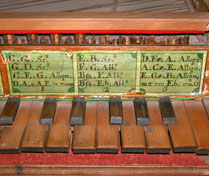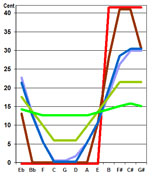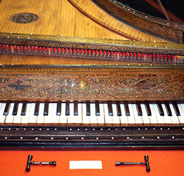Contents of the Unequal Temperaments book
PART ONE - DESCRIPTION, ANALYSIS, HISTORY
- Intervals, Scales and Temperaments
- Evaluation method for the temperaments
- Equal Temperament and Pythagorean intonation
- Just intonations
- Meantone temperaments
- Lute temperaments
- Circular French temperaments
- Circular Good temperaments
- Comparative evaluation of temperaments
- TEMPERAMENT AND PERFORMANCE: A HISTORICAL REVIEW
PART TWO - TUNING AND FRETTING INSTRUCTIONS
- Tuning methods and temperament schemes for keyboards
- Temperament schemes for fretted clavichords
- Directions and schemes for fretted strings
- Intonation for wind instruments, unfretted strings and voices
PART THREE - COMPLEMENTARY TOPICS
- Multiple divisions of the octave
- Analysis of sources on temperament
- Complementary topics and Appendices
LITERATURE CITED
Some unique features of the book
- A definitive and extensive treatment of Baroque French Circular temperaments (33 pages).
- A comprehensive study of temperaments advocated for J.S. Bach, with new results (16 pages).
- A full Historical Review of temperaments, covering the Western Music eras from the Middle Ages to present times, with their different musical instruments and countries (30 pages).
- A full treatment of Equal Temperament, its diffusion and evolution of tuning accuracy (12 pages).
- Accurate and fast keyboard-tuning schemes, both in early style and using beat rates (64 pages).
- Special tuning schemes for fretted clavichords (11 pages).
- Fretting charts for lutes and viols with an ample assortment of temperaments and tunings.
- Charts and directions for unequal temperament fingerings for violins and other unfretted strings.
- Charts and directions for unequal temperaments in early woodwinds.
- The most complete ever treatment of unequal temperaments for natural brass instruments.
- Different methods for improved ensemble intonation in Equal Temperament.
- Improved spreadsheet and other extras: please click the Erratas and Extras button.



